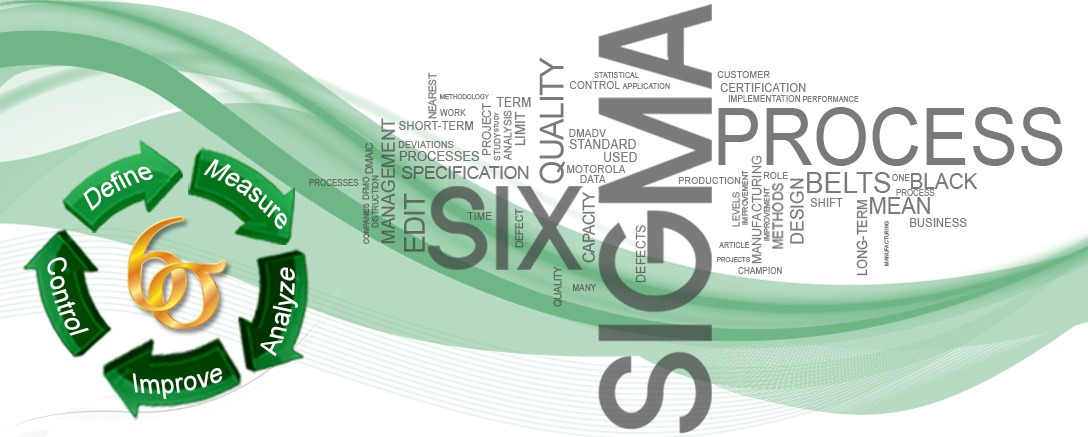What is Six Sigma?
A new idea of quality management process was developed in 1986 by the American company Motorola in accordance with evolving markets and processes. This concept has been polished and refined over the years into a proper theory of principles and methods, designed for business transformation by means of a well-defined process. Now this complete product is known as Six Sigma. Basically, Six Sigma is a clearly defined and systematic business methodology for increasing profitability and customer satisfaction by enhancing quality, streamlining operations, and reducing defects in overall organizational processes.
At various organizations this concept simply refers to a quality measure that aims for near perfection. For the organization there could be a customized name for Six Sigma such as zero defects, customer perfection, or operational excellence. Its statistical representation quantitatively explains the performance of a process. A process must not create above 3.4 defects per million opportunities in order to statistically accomplish Six Sigma. Moreover, anything outside of customer specifications is defined as Six Sigma defect and then the total amount of defect chances is known as Six Sigma opportunity.
Six Sigma Explained in Principles and Methods
Six sigma explained through principles and methods. The concept of Six Sigma has five key principles which is focus on the customer, measure the value stream and find the problem, get rid of the junk, keep the ball rolling, ensure a flexible and responsive ecosystem. It also uses different techniques such as Brainstorming, Root-Cause Analysis, 5S System, Kaizen, Benchmarking, Poka-Yoke, and Value-Stream Mapping in order to accomplish the desired outcome. Despite of its various principles, methods and techniques we must keep in mind that Six Sigma has a simple goal which is to deliver almost-perfect products and services for optimal customer satisfaction and business transformation.
There are different methods used in Six Sigma for finding out deviations and problems solving. However, the standard methodology used by Six Sigma practitioners is known as DMAIC (Define, Measure, Analyze, Improve, and Control). It must be kept in mind that a data-driven management process is used in Six Sigma in order to improve as well as optimize business processes. In conclusion the fundamental structure is strongly focused on customer focus and robustly use of statistics.
DMAIC
All phases of DMAIC hold various steps for business transformation.
Six Sigma explained through the DMAIC methodology:
- The first phase begins with ‘DEFINE’ which is a customer-focused The primary step at this stage is to define the business problem from the perspective of customer. After that, the second step is to set goals such as what do we want to accomplish, what are the needed resources our organization will use to attain these goals, and then the next step is mapping of the process. An organization must be aware that it is important to corroborate with the stakeholders in order to make sure that we are moving in the right direction.
- The second phase is “MEASURE” which put emphasis on the project metrics along with the tools used in the measurement. For example, how it can be quantified and how it can be improved. The first step during this phase is to measure our problem with supporting data or in numbers. The second step is to define measure of performance and limits are fixed. Then as a third step the measurement system will be assessed that we intend to use. At this step we will evaluate that it holds the potential to help us in achieving the desired outcome.
- The third phase is “ANALYZE” where in order to discover the influencing variables we analyze the process. During this phase the first step is to find out the effectiveness and efficiency level of the organization’s process such as does it support us in what we need to achieve. As a second step the goals are quantified in numbers like decreasing defective products by 20%. In the end we use past data to discover any sort of variations.
- Furthermore, the fourth phase is “IMPROVE” where we examine how “Y” is impacted by the alterations in “X.” An organization classifies at this phase how the process implementation can be improved. As an initial step all possible causes are identified and tested to discover which of the identified “Y” variables are influenced by “X” variables. Secondly, the relationship between the variables is discovered. The third step of this phase is to create process tolerance which is defined as the specific values that can be held by certain variables and still considered within acceptable limits, such as, the quality of a particular product.
The last and fifth phase is “CONTROL” the performance objective identified in the previous phase is evaluated. Here we determine if it is properly implemented and there is sustainability in the designed improvements. In order to do so an organization authorizes the measurement system it intends to use as an initial step. After that, the process capability is established to assure goal is accomplishment. Lastly, the process is implemented when we are satisfied with the previous step.






